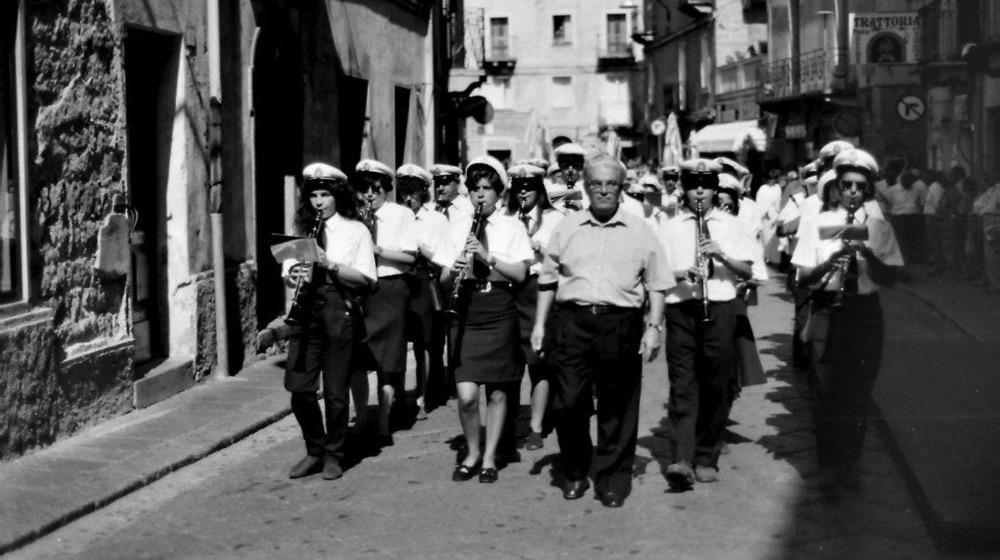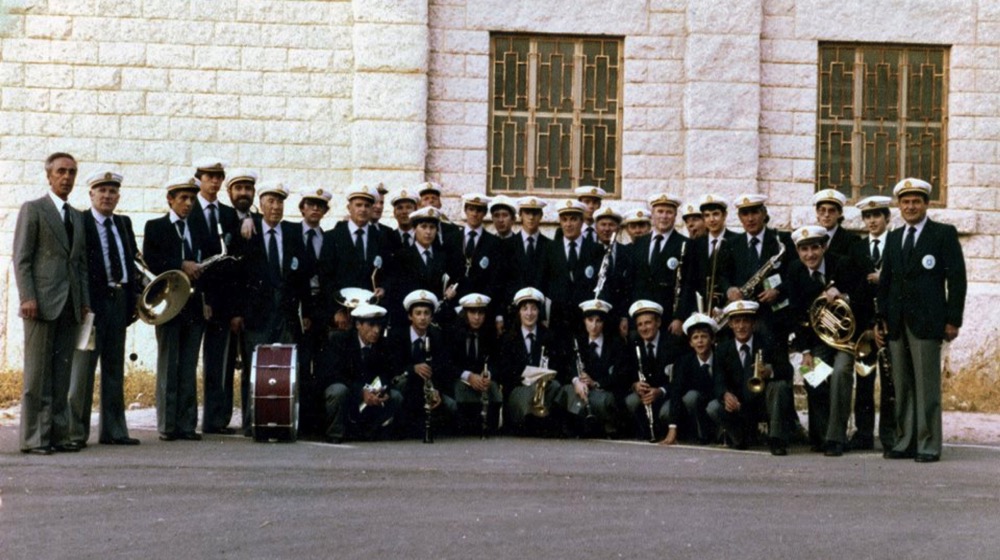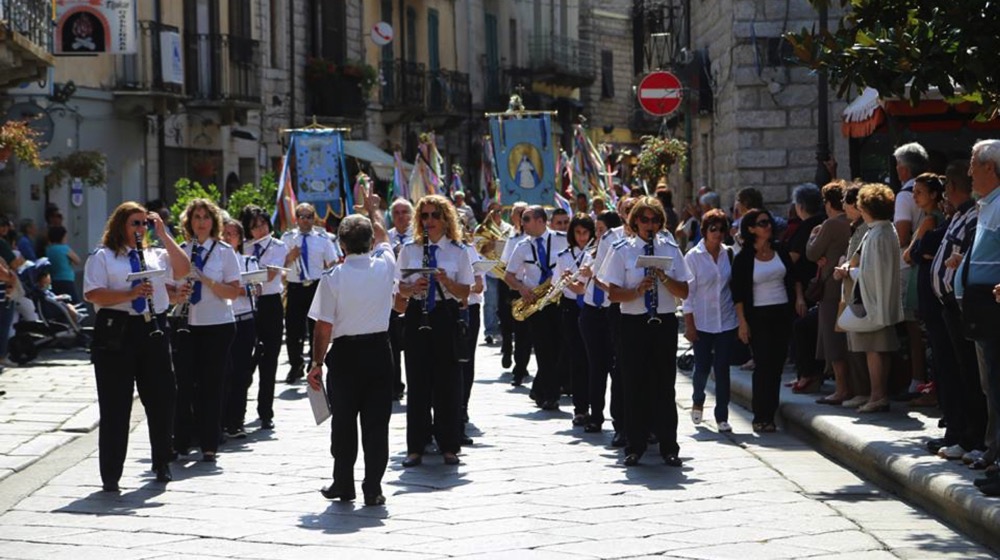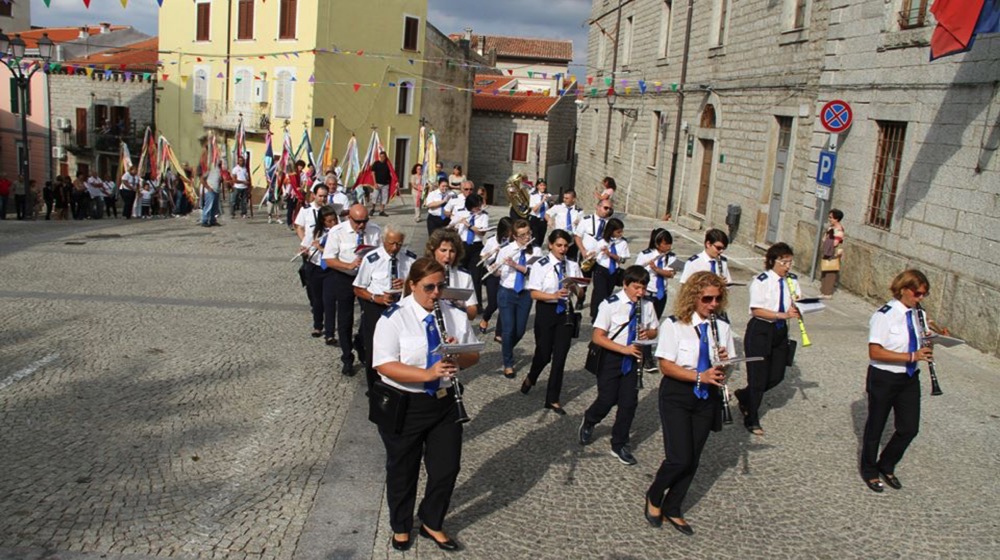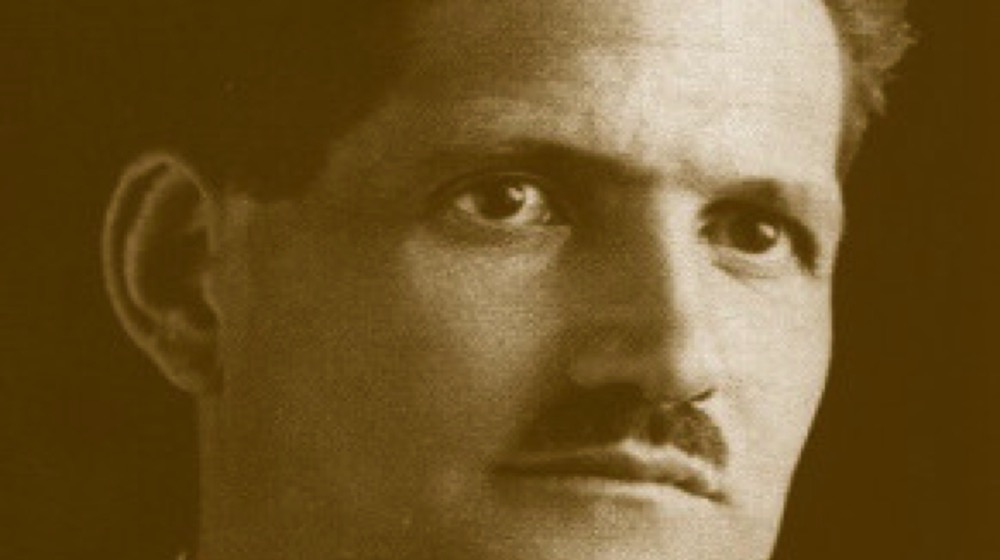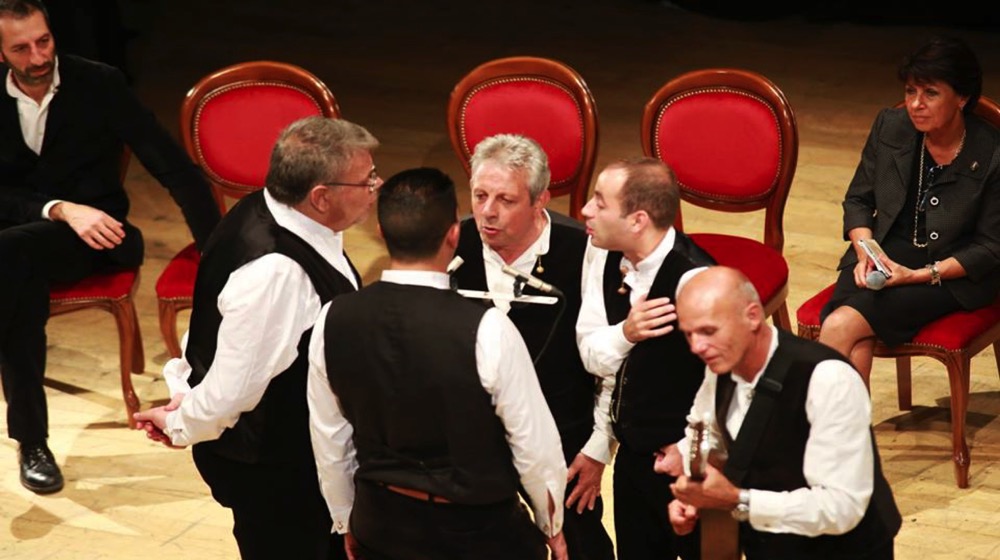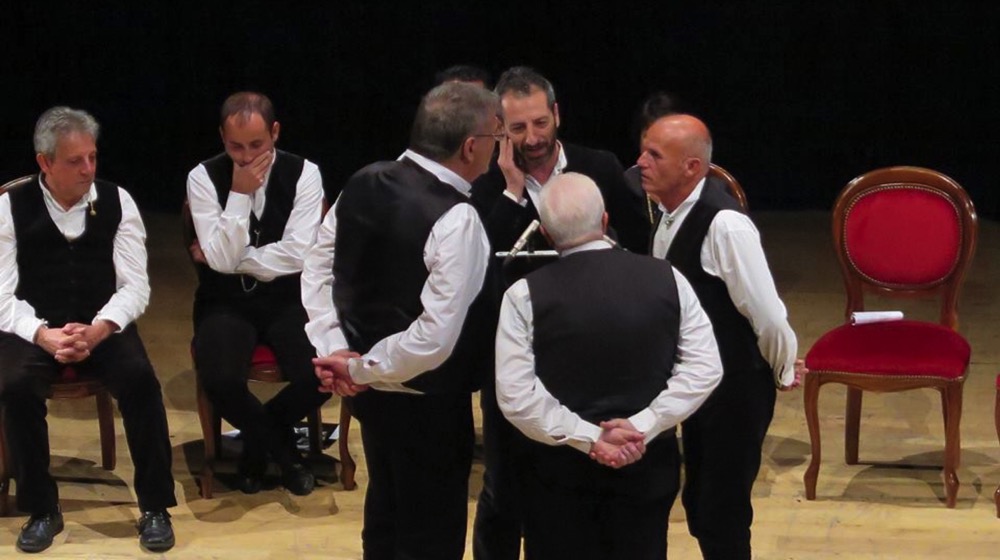Music and Art
The Bernardo De Muro Museum
The Bernardo De Muro Museum was established on 31 December 1980 with the 936° deliberation of the Municipal Council. The assets became part of the comunal patrimony since 1953 with a specific act of acceptation of the donation made in favor of the institution at the hands of the Tenor himself. Over the years the collection has been enriched further by subsequents donations
Our museum is currently located in the spaces of the City library G.M Dettori, situated in the recently restored ex Collegio Francescano dei Padri Scolopi. The space dedicated to the museum is composed of three rooms in which are exposed photograps, paintings and much more!
The “Fondo De Muro” represents an important proof of Bernardo De Muro’s life and musical career. A brief biography can be of use to contextualize its relevance for the city of Tempio:
Bernardo De Muro was born in Tempio Pausania in 1881; an oral tradition, maybe a bit fictionalized, refers that a little theater company passing by Tempio, having heard him singing and having acknowledged his undeniable talent, suggested him to nurture his natural gift; it is certain, however, that he studied at the Accademia musicale di Santa Cecilia since 1902 before he decided to continue his studies privately. His official debut takes place in Rome, 1910 with the interpretation of the character “Turiddu” of Cavalleria Rusticana. His fame quickly expands up to South America where he takes part in many tours. A marriage with an american woman, occurred in 1925, leads him to decide to reside in the United States, where he is very appreciated by both the public and the critics. Around 1944 he retires from the stages after a successful career. He dies in Rome in 1955 and his body is buried in Tempio Pausania’s cemetery.
These few informations suggest this character’s great importance, and, therefore, the importance of the heritage made up by his collection, which not only offers a cross-section of his concert and opera’s life, but guarantees a much bigger vision of life, people, things and landscapes of the world in the first decades of the XXth century. A vision documented by the several photographs (more than a thousand!) which film his personal life in Cattolica, his friendship with Garibaldi’s family, his hunting trips, his visits to Caprera, Cagliari, his journeys to South America, his family and much more.
The Fund is composed of discs, stage dresses, photographs, sheet music, mails and of a large press release collected by De Muro himself. The press release underlines all of the events of his artistic career. The fund can be divided in three macro-parts mainly consisting of paper and textile material and various materials.
“Various Materials” mainly contains everyday objects purchased by the De Muro family or given to them as a gift. This part includes a gramophone, bakelite discs, various ceramics, wooden and hard plastic objects, coins, glasses, ceramics, silver objects (including the cutleries that belonged to Giuseppe Garibaldi), weapons with decorations made of ivory and bone, the trunks branded “Brigata Sassari”, several types of pipes ecc.
The paper material brings together:
- photographs of different size, thickness (big, thin or glazed cardboard), typology, technique (albumin, carbon, silver salts jelly), graphic effect (chiaroscuri, sepia)
- manuscripts comprising transcriptions, adjustments on sheet music and lyrics, inscriptions on various objects like photographs, books or agendas
- newspaper clippings, most of them regarding reviews of his exhibitions
- prints of his telegrams, playbills, books, portraits, mails, novels, magazines, paper money ecc
- paintings and drawings (Caricatures and portraits) carried out with different techniques like oil, watercolor, pencil, chorcoal, on canvas, bright and dark cardboard.
The textile material is above all composed of costumes of scene worn by the tenor in his exhibitions, enriched by metal applications, ceramics and plastics applied on materials like silk, cotton, wool, satin and leather as regards the footwears. Other than the complete costumes, there are also single elements like pants, shirts, tights, a mantle and other accessories. An integral part of the costumes of scene are the accessories, starting from the belts made of tissue or leather and arriving to the helmet that is a part of Radames’s costume, not to mention the metal bracelets with elements made of glass paste, the swords, a dagger, an horn, a chain mail and lastly the sheath of Osaka’s sword with the handle made of bone.
Recently the fund was enriched thanks to the donation to the city of Tempio Pausania of additional artifacts by the tenor’s daughter Johanna Elena De Muro Speaks (also known as Dina) whom currently lives in the United States.
The project of re-staging of the Museum in the seat of the ex-convent of the Padri Scolopi started in April of 2007 with the cooperation of the Soprintendenza per i Beni Storici Artistici ed Etnoantropologici per la Sardegna.
Diskography
The recordings, labelled HMV (HIS MASTER’S VOICE) and with US brand VICTROLA. offer further value to the already brilliant career of De Muro. According to the informations drawn by the publication carried out by Antonino Defraia, whom published a musical anthology of the tenor called “Il Mito dell’Opera – Bernardo De Muro”, the first recordings date back to 1912 and include some airs from Isabeau and Andrea Chenier. In 1917 instead he dedicated himself to the recording of the most famous motives from Il Trovatore, Aida and Otello. Regarding this last opera, we should say that the tenor always refused to portray it in public, even though his interpretations were judged prominently by the critics. The reason behind his decision was connected to his stature: he confessed that he’d felt ridiculous interpreting and say words suitable for a tall and strong man. The series of recordings ended between 1920 and 1928 with the registration of others famous songs from Carmen and La Fanciulla del West.
Biography
Bernardino Demuro (also known as Bernardo De Muro) was born in Tempio Pausania, Gallura on November 3 1881 and died in Rome on October 27 1955. Firstborn son of Antonio Maria and Giovanna Maria Demuro he started as a self-taught singer with some traditional songs of the gallurese culture. More passionate to the singing than to his studies (He himself stated to have attended to less than 100 days of school), during the evenings he used to sing serenades under the balconies of Tempio Pausania’s young girls. In 1896 he obtained the qualification of operaio quadrettaio working in a factory of turaccioli and then continued his activity in his father’s cork factory.
His first public exhibition took place on July 1901 at Teatro Giganti in Tempio Pausania for a charity event in which he portrayed La Contessa di Rocca D’Oro, an opera written by his cousin Giuseppe Antonio Demuro, together with a travelling company.
In 1902 he moved to Rome where he started his singing studies with the famous baritone Antonio Cotogni
In 1903 he participated in a competition for the acceptance to the Conservatorio Musicale di Santa Cecilia where he won one of the two available places as a tenor. In the same year he was called for the conscription which he carried out at the hospital del Celio in Rome in the sanity company, following a brief apprenticeship in the pharmacy of the doctor Rodolfo Lay in Tempio Pausania. In 1905 he finished his conscription and left the conservatory.
He then continued his training as a tenor with the teacher Enrico Sbriscia.
In 1906 he is the main character of the opera Pagliacci but, still regarded as too much immature for the scenes, continued his studies and, thanks to the recommendation of the famous tenor Francesco Marconi, improved his skills under the guide of a new teacher, Alfredo Martino.
He officially debuted at the theater Costanzi of Rome on May 11 1910 as Turiddu in Cavalleria Rusticana
In 1911 he started his theatrical season in Puglia in which he performed operas such as Madame Butterfly, L’africana, Ruy Blas and Carmen
The great success came in 1912 when he performed for the first time at the theater La Scala in Milan as Folco, the main character of P. Mascagni’s Isabeau under the direction of Tullio Serafin.
In 1913 he was cast by the manager Walter Mocchi for his first tour in South America, including states like Argentina, Brasil and Uruguay. There he interpreted for the first time the Iris at the theater Coliseo of Buenos Aires
Between the november of 1913 and the april of 1915 B. De Muro took part in two tours, one in Spain while the other in Italy. On March 17 1915 he debuted with Radames in the opera Aida at the theater Costanzi in Rome. On April 24 1915 he sailed for his second tour in South America
After the start of the first world war, on October 24 1915, Bernardo came back to Italy to volunteer in the army. He was assigned to the medical management of the hospital Sant’Ambrogio in Milan as Major Corporal of Health. Throughout the war he performed in many charity concerts. Among the various exhibitions of his military period whe remember the first of the Trovatore at the theater of La Scala on November 11 1916.
Arrived in Spain for the second time between December 1917 and May 1918 he returned on the stages for Spain’s royal family, performing the Andrea Chenier
Among 1918 and 1925 he traveled between Spain, the South and the Center of America, Italy, Germany and the Principate of Monaco portraying operas such as Il Trovatore and La Fanciulla del West
During one of these tours he met the soprano Helen Wait whom the following year will become his partner in life as well as in his job.
In 1925 he was cast by the company Acierno-Salmaggi and traveled to New York, where from the May of the same year to June 1926 started his first tour in the United States. Here, on June 27 1925 performed the Aida at the Yankee Stadium of New York, performance to which attended 48.000 spectators, producing a collection of more than 50.000 dollars.
On April 29 1926 his daughter Joanna Elena Demuro was born. On June of the same year he was hired for a new tour in South America, during which he married Helen Wait on November 2 1927 in Cristobal, Panama.
From October 1927 his career went ahead among the various tour in all of the Americas until February 1929 when he is forced to a period of inactivity due to his health problems. He resumed his activity in Italy from May 1930 to May 1931.
On June 1931 he begun his third tour in the United States, where he stayed until november of the same year. He was then forced to come back in Italy due to a surgery which made him stay away from the scenes for two years.
He came back to the theaters in 1933 and among the operas portrayed surely stands out the first representation of Campane di Guerra where he played the role of Dane, at the theatre Puccini in Milan. From September 1933 to 1935 he carried out his fourth tour in the United States.
His career continued in Italy from 1938 to May 2 1939 when he gave farewell to the Italian scenes and then moved out in the USA permanently, where on October 14 1944 closed his career portraying the opera Aida at the Brooklyn Academy of Music in New York.
On June 1948 he came back to Italy where he stayed until he died of cancer in Rome on October 27 1955. His corpse was then buried in Tempio Pausania.
Info
Where: Tempio Pausania (OT) – Piazza del Carmine, Palazzo dell’ex Convento dei Padri Scolopi – Primo piano della biblioteca comunale
Contact: Servizio Cultura Sport Turismo e Manifestazioni – Ufficio Cultura: Resp. Procedimento Dr.ssa Patrizia Serra tel. 079/679972 – E-Mail : biblioteca@comunetempio.it
Museum contact: c/o Public Library: for information contact volunteers staff SCN Tel. 079/671580 – e-Mail: museobdm@comunetempio.it
Opening hours: from monday to friday – 8:30 till 6:30 PM – on saturday, from 10:00 till 1.00 PM
Fee-entry, guided tour on request, no architectural barriers (main entrance from the public library)
Fb page: Museo BDM Tempio Pausania
Banda Musicale Tempio Pausania
Musical Band “City of Tempio” origins, date back to the period after the Second World War, when a group of fifty amateur musicians founded for the first time a city band, directed by Francesco Azara, based in the sacristy of San Francesco Church.
During the sixties, the direction was entrusted to the maestro Salvatore Rau, the new headquarters located in the premises adjacent to the church of San Giuseppe; in the late sixties the band broke up, to be reconstituted in 1980 in the presence of major local authorities and the Mayor. The direction was given to the master Masino Azara, son of the founder Master, based in the spaces below the Vecchio Caseggiato, also marking the entry of women in the town band.
Over time there have been many masters: Lorenzo Sanna, the young Fabrizio Ruggero and Alfonso Ruggero, who currently heads the association during traveling exhibitions.The artistic and musical direction is entrusted to Daniele Ricciu, professional musician and virtuous saxophone.
Currently the band is composed of thirty elements of all ages. In addition to enliven the celebrations of the city, it took part in several bands meeting and music events.
Gavino Gabriel
Gavino Gabriel was a musicologist, a popular traditions lover of all the Italian regions especially that of Sardinia, with particular regard to Gallura.
Born in Tempio, August 15, 1881, he graduated in Pisa in 1905. In 1910, he went to London to deliver a series of lectures about the Sardinian musical folklore and between 1913 and 1914 to “Filangieri” of Turin and “Lyceum” of Milan is presented La Jura, an opera that tells a story related to the agro-pastoral world set between 1810 and 1820 among Gallura. His work received numerous positive reviews. He also wrote a Gallura suite for string quartet on islanders themes.
After the war experience that saw him busy as an infantry officer, He come back in Gallura and selected the five tasjadori of Aggius, which were presented in 1910 at the Teatro Quirino in Rome. Gavino Gabriel defined Gallura songs as sweet and harmonious as its landscape, making the first recordings and classifying different types of song, monadic and melodic songs. The term Tasgia does not have corresponding in Italian, we can say that Tasgia is synonymous with grace and harmony. Polyphony of Gallura consists of five singing voices: boci or tinori, contra, trippi, falsittu and grossu or bassu.
In these years he met Gabriele d’Annunzio, making a close friend ship with him, the bard called Gavino Gabriel as “Sardo, of the best of breed”.
Between ’22 and ’25 he will be strongly involved in the study and collaborations with important personalities. In 1932 he was appointed State Record Director, which he previously established with Rodolfo De Angelis, he interviewed many personalities, including Luigi Pirandello, Grazia Deledda and Giovanni Gentile. Always for the State Record, he recorded a collection of Sardinian Songs, personally directing the group ‘I cinque Aggesi’.
In 1936 he was appointed as journalist of The New Eritrea newspaper, remaining in the new colony for about twenty years. During this period he collaborated with the Italian government in Eritrea as a interpreter and consultant.
He will return to Italy in 1953 where he resumed his non-fiction activities.
He spent the last years of his life in Rome, where he died on November 28, 1980.
In Tempio there are two choirs that are named Gavino Gabriel, and to him the city of Tempio dedicated a plaque applied in the main facade of the town hall.


